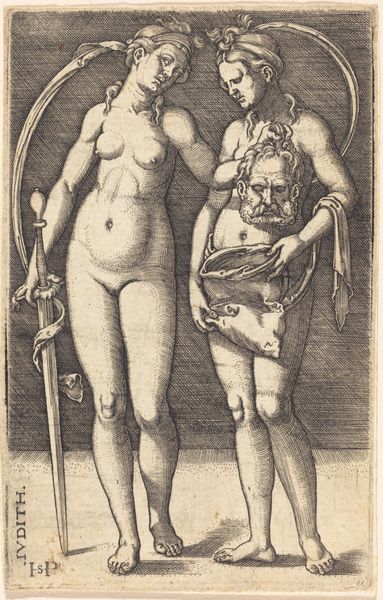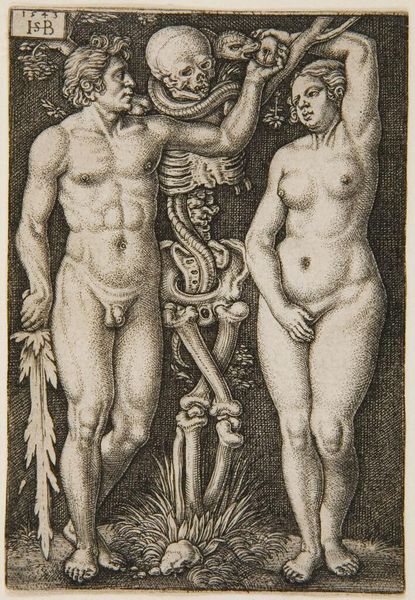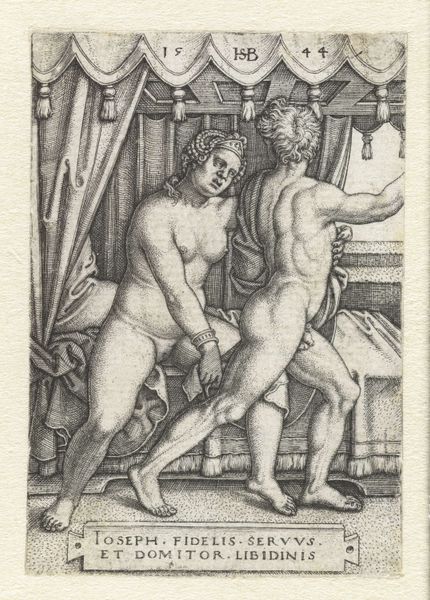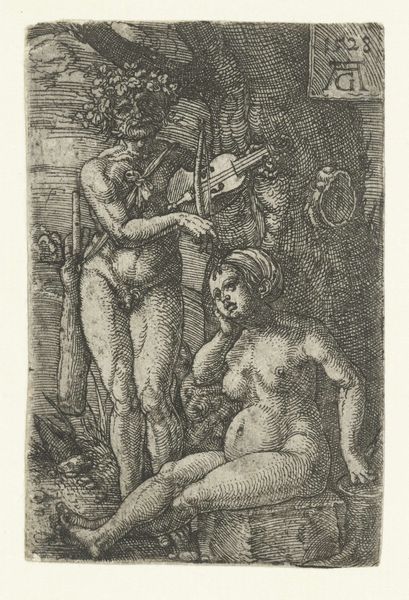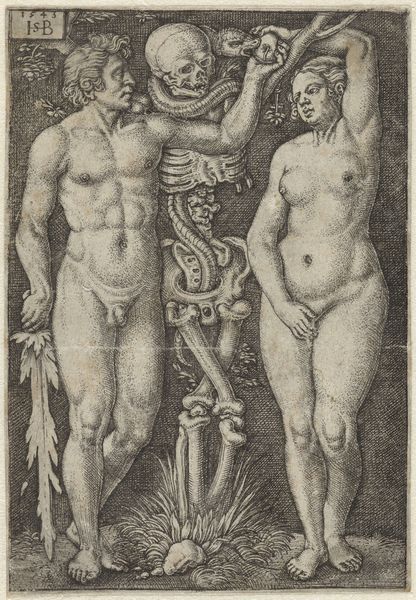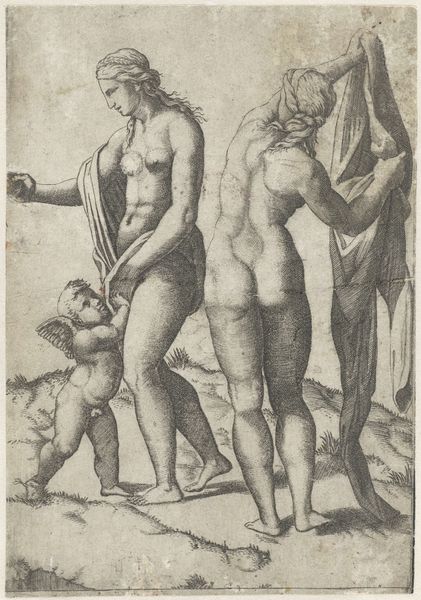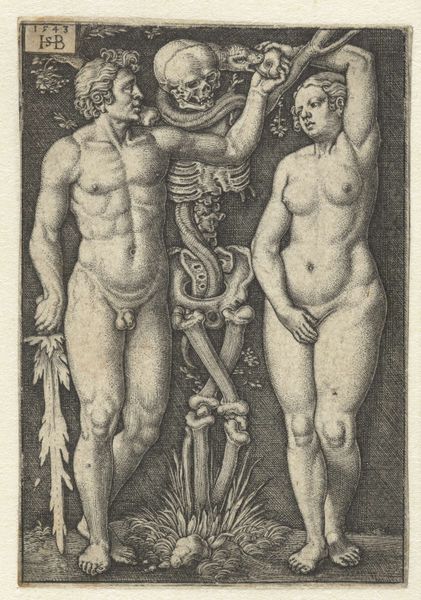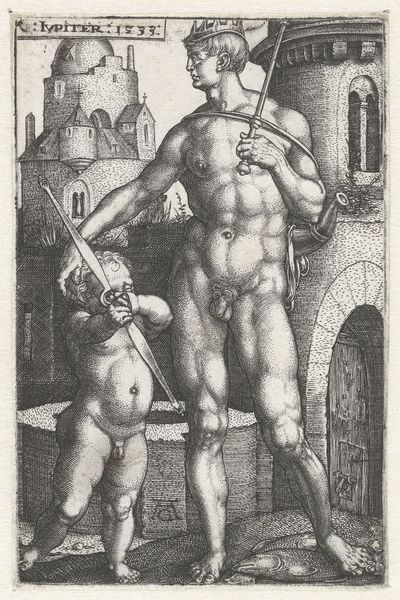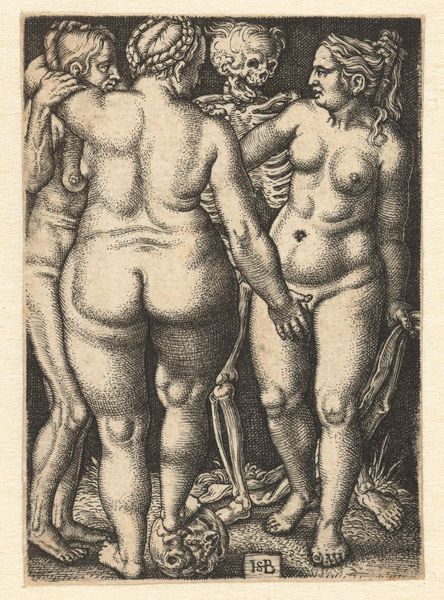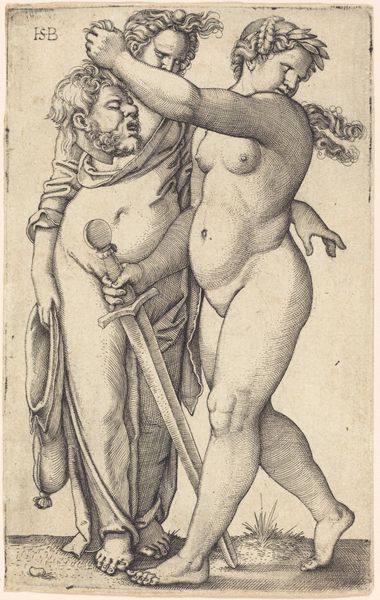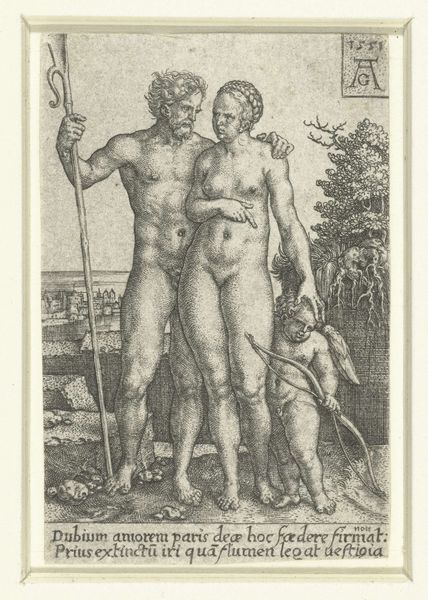
print, engraving
#
narrative-art
# print
#
old engraving style
#
figuration
#
history-painting
#
italian-renaissance
#
engraving
Dimensions: height 108 mm, width 68 mm
Copyright: Rijks Museum: Open Domain
Sebald Beham made this print of Judith with the Head of Holofernes in the 16th century using engraving. The story of Judith was often taken up in the art of 16th-century Europe as it fit with the need to establish a new kind of civic morality. Judith was a figure who acted decisively and violently in defense of her people, and Beham's print is a particularly gruesome depiction of her victory. Made in Germany, the image creates meaning through its stark visual codes. The naked figures, the severed head, and the sharp sword make a clear statement about the heroic nature of Judith's actions. It implicitly comments on the social structures of its time. Was Beham self-consciously conservative or progressive in choosing this subject? That's a question that requires the help of the historian. To understand better how the image functions as a piece of social commentary we might use sources such as contemporary political pamphlets, sermons, and legal documents. This will provide more insight into the social and institutional context that shaped it.
Comments
No comments
Be the first to comment and join the conversation on the ultimate creative platform.
